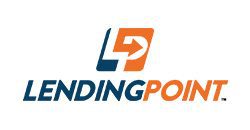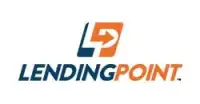1. Decide if refinancing is right for you
Before refinancing a personal loan, calculate how much it’ll cost — it helps to use a personal loan calculator — and consider any potential fees. For example, if your existing loan has a prepayment penalty for paying it off early and your refinanced loan would require an origination fee, costs can add up quickly.
You’ll also want to review your credit to see if you’d likely qualify for a new personal loan with competitive terms. You can get your credit score for free with LendingTree, and you can also access free credit reports from each of the three major credit reporting agencies (Experian, Equifax and TransUnion) via AnnualCreditReport.com. Since credit report errors can hurt your credit score, it’s important to ensure that there aren’t any before comparing lenders.
2. Choose how you’d like to refinance your personal loan
There are two common ways to refinance your debt: personal loans and balance transfer cards.
Personal loans can offer larger borrowing limits than a credit card, so taking one out is a common technique for combining multiple debts at once. Personal loans also have a structured payment plan with a single, fixed payment each month.
On the other hand, balance transfer cards can come with special offers, like a zero-interest introductory period. These cards let you pay down your debt without incurring high interest costs, as long as you pay off the balance in full before the introductory period ends. If you don’t, you could be charged interest on your remaining balance and wind up deeper in debt than before.
3. Shop around for a rate
Once you’ve decided to refinance your loan, you’ll want to compare companies to see which has the most affordable option. Consider factors like the APR, fees, borrowing limits and repayment terms.
Make sure to watch out for origination fees, though. On a $5,000 personal loan, an origination fee of 5% would mean that $250 will be deducted from the deposit you receive from your lender.
If you decide to use a credit card, you’ll need to consider the typical 3% to 5% balance transfer fee. If you can pay off the balance transfer card during the introductory period, that fee may be worth it, but it will add to the debt in the short-term.
4. Prequalify and compare offers
When you prequalify for a loan or credit card, lenders quickly assess your creditworthiness based on a few factors, like your income and savings. They’ll often also conduct a soft credit inquiry, which doesn’t affect your credit score.
You should always prequalify for refinancing debt, as this gives you the opportunity to see what repayment terms you could receive and compare offers from different lenders.
You’ll also want to compare your offers to your existing debt and decide whether refinancing makes sense for you. Make sure you understand exactly how much your newly refinanced loan will cost you, including interest charges, origination fees, your estimated monthly payment and any other costs.
5. Choose a lender and formally apply
When you’ve chosen a loan or credit card, you’ll submit a formal application. This will trigger a hard credit inquiry, which will negatively impact your credit temporarily. Lenders often request supporting documentation, such as copies of tax returns, pay stubs and bank statements.
If you’re approved, your lender may offer to transfer funds to your bank account, mail you a paper check or pay your creditors directly. Once you receive the loan, pay off your original debt quickly to avoid additional costs. Consider calling your old lender to ask them for the exact payoff amount to avoid paying more than you should.
Lastly, you’ll want to follow up with your old creditor to confirm that your debt was paid in full. Request that they send you a statement in writing.











